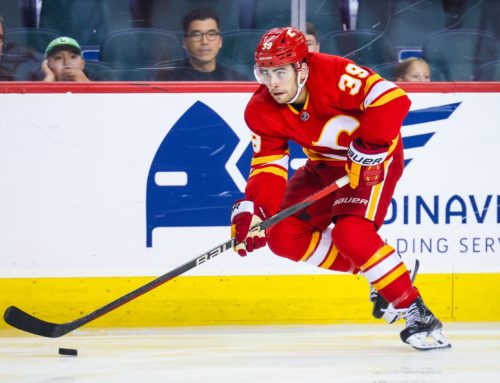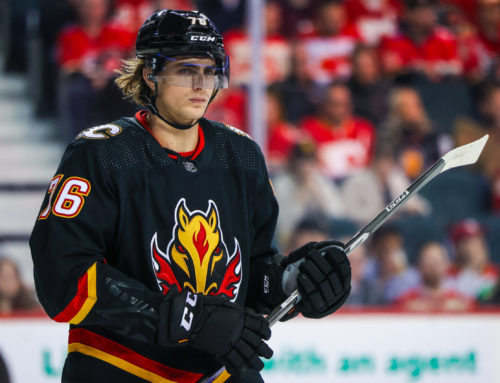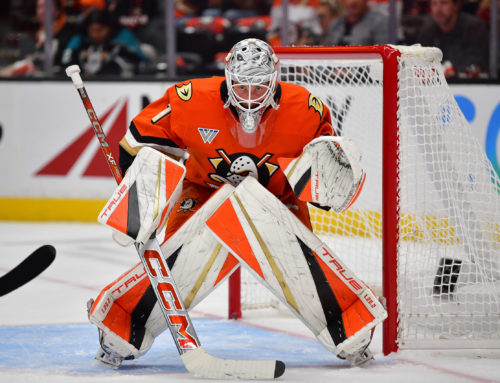
Follow these fundamental rules to own your fantasy draft.
Over the past couple seasons, Geek of the Week has profiled a number of players who hopefully helped provide value to your fantasy hockey team. Using the tools at Fantasy Hockey Geek, we have been able to identify up and comers like Eric Gelinas, bounce back candidates like Claude Giroux and Fantasy foolsgold like Teddy Purcell who have all come through (or declined) as predicted. Fantasy Hockey Geek is an amazing tool to be able to assist in analyses like these and pull off some major coups and those are the most fun moves to pull off in fantasy hockey.
The real value of FHG though (and what will win you your pool) is in the fundamentals: what positions matter most in your league? Which categories are most important? With draft season about to be in full swing we thought it would be the perfect time to get back to the basics and review some of those fundamentals to ensure that you rock it at the draft table and rule your pool. In fantasy hockey – particularly at a draft – it all comes down to understanding player value and there are three interrelated key concepts that help to determine this value:
#1 – Position Matters
I remember to this day the first time I realized this concept: it was many moons ago, long before FHG existed and I was a green fantasy hockey GM. The idea of position scarcity dawned on me one night pre-draft and the next day while others in my pool were drafting Vincent Lecavalier, I was drafting the likes of Nik Lidstrom. I dominated the league that year. The concept is simple: There are more centers available who can provide numbers to your team than there are defencemen, so if you get the high end defensemen early the centers you have to take near the end of the draft aren't that far of a drop off from the ones at the top (that year, I drafted M Richards in the 10th and he outperformed Vinny who was taken in the first). If you wait on D however, the drop off from a high end D to a low end D is significant. The guy who took Lecavalier probably had a 20pt defenceman on his roster. The drop from Lidstrom to a 20pt d-man was 60 points that year. The drop from Lecavalier to Richards was negligible or non-existent.
Let's show an example of what I mean by running a sample league in Fantasy Hockey Geek. All numbers presented today are based on what we consider to be reasonable projections for the 2014-15 season.
(Yahoo! Standard 12 team league measuring G, A, +/-, PPP, PIM, SOG)
When I run the league in FHG, I get a full list of every player in the NHL and their rank in that particular Fantasy Hockey League. It takes two minutes and fully exports to Excel which is unbelievably handy for the draft. Here are a couple examples of the results:
| Rank | Player | Position | G | A | +/- | PIM | SOG | PPP |
|---|---|---|---|---|---|---|---|---|
| 65 | Jack Johnson | D | 5 | 35 | 0 | 50 | 165 | 20 |
| 66 | Blake Wheeler | RW | 30 | 40 | 0 | 55 | 220 | 20 |
| 67 | Jeff Skinner | LW/RW | 30 | 30 | 0 | 30 | 260 | 20 |
| 68 | James Wisneiwski | D | 8 | 30 | 0 | 50 | 135 | 20 |
| 69 | Andrew Ladd | LW | 25 | 40 | -10 | 60 | 220 | 15 |
Looking above at the players ranked 65th-69th, you can see that there are forwards in that group in the 60-70 point range who are calculated as having similar value to defencemen who are in the 40-50 point range.
Another way to look at it is to compare players with similar output who play different positions:
| Rank | Player | Position | G | A | +/- | PIM | SOG | PPP |
|---|---|---|---|---|---|---|---|---|
| 45 | Victor Hedman | D | 10 | 45 | 10 | 60 | 135 | 10 |
| 129 | Mikko Koivu | C | 15 | 45 | 0 | 30 | 165 | 20 |
Hedman and Koivu are projected to have pretty similar output next year across the board, but Hedman is projected to be the 45th most valuable player while Koivu's projections are much lower at 129.
The reason that defencemen are worth more in this league is simply because finding points from the D slot is much harder than finding points from a C. Intuitively, I think we all know this but with the help of Fantasy Hockey Geek, we can calculate exactly what the difference in value is. This information is critical to have at your fingertips at the draft table.
#2 – All 55 point players are not created equal
In a roto-style head to head league people invariably place too much weight on goals and assists and not enough emphasis on the peripheral categories. It's just the way we look at players – I do it myself too. The thing is though, every category matters and in most leagues they count for the same weight so winning the hits category every week is just as important as winning the goals category.
Let's run a few scenarios in FHG to demonstrate what I mean:
First, I ran a simple Yahoo! 12 team league measuring only Goals and Assits. Here are some key players:
| Rank | Player | Position | G | A |
|---|---|---|---|---|
| 222 | Ryan Ellis | D | 7 | 25 |
| 224 | Cody Hodgson | C | 20 | 35 |
| 225 | Evander Kane | LW | 20 | 35 |
Looking above we can reinforce the idea from fundamental #1. A 32 point defenceman (Ellis) is worth more than a 55 point forward (Kane). As 55 point player, Cody Hodgson and Evander Kane are essentially equals in this league. Look what happens to his value
though if we change the league to include SOG:
| Rank | Player | Position | G | A | SOG |
|---|---|---|---|---|---|
| 68 | Evander Kane | LW | 20 | 35 | 290 |
| 69 | Mark Streit | D | 10 | 35 | 140 |
| 127 | Cody Hodgson | C | 20 | 35 | 175 |
In a league with these categories, Kane is now the 22nd most valuable player! COHO is left in the dust as the 153rd most valuable. These two 55 point players are now vastly different. I threw Dusty Buff's numbers into this chart to reiterate my point #1 above. Byfuglien's output is projected to be very similar to Kane's, but based on his D eligibility his value is even higher. There are so many variables at play (player's output, position, categories measured) that it's hard to determine the exact impact of each factor. FHG does that for us as shown above.





 EDM
EDM FLA
FLA CHI
CHI ANA
ANA L.A
L.A MTL
MTL PIT
PIT
